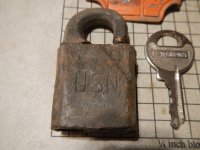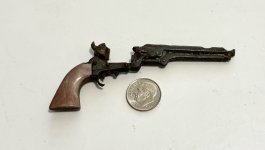archer66
Sr. Member
How about a sticky thread called "advice for new artifact hunters"

Here's what I'm thinking....
There are several guys who frequent this site that have a huge WEALTH of information and experience hunting artifacts. You hunt streams, rivers, fields, shelters, you dig/sift, you disc your fields. All parts of the country are represented from the NE to the southwest and all points in between. I think it would be great if you guys who have had a lot of success could post to the thread and discuss the following plus anything else you can think of:
--discuss legal issues with collecting in certain states
--etiquette....ask permission, don't trespass, don't steal your friends hunting spots
--techniques for searching fields
--how to narrow down which parts of fields are best to focus on first
--stream hunting tips
--digging and sifting techniques
--show pictures of preforms and blanks as opposed to finished products
--show flaking pattern examples and explain how they help identify point types
--show different hafting techniques
--how to recognize material worked by man rather than nature
--examples of different materials, quarts, flint types, hardstones
I know its a lot to ask but everyone is willing to give advice and share information so why not put it in one big resource??


Here's what I'm thinking....
There are several guys who frequent this site that have a huge WEALTH of information and experience hunting artifacts. You hunt streams, rivers, fields, shelters, you dig/sift, you disc your fields. All parts of the country are represented from the NE to the southwest and all points in between. I think it would be great if you guys who have had a lot of success could post to the thread and discuss the following plus anything else you can think of:
--discuss legal issues with collecting in certain states
--etiquette....ask permission, don't trespass, don't steal your friends hunting spots
--techniques for searching fields
--how to narrow down which parts of fields are best to focus on first
--stream hunting tips
--digging and sifting techniques
--show pictures of preforms and blanks as opposed to finished products
--show flaking pattern examples and explain how they help identify point types
--show different hafting techniques
--how to recognize material worked by man rather than nature
--examples of different materials, quarts, flint types, hardstones
I know its a lot to ask but everyone is willing to give advice and share information so why not put it in one big resource??
Amazon Forum Fav 👍
Upvote
0


 (joking I'll have to give that 1 a try!)
(joking I'll have to give that 1 a try!)



